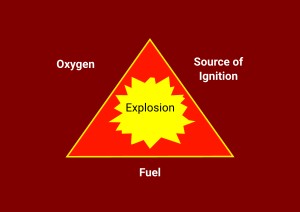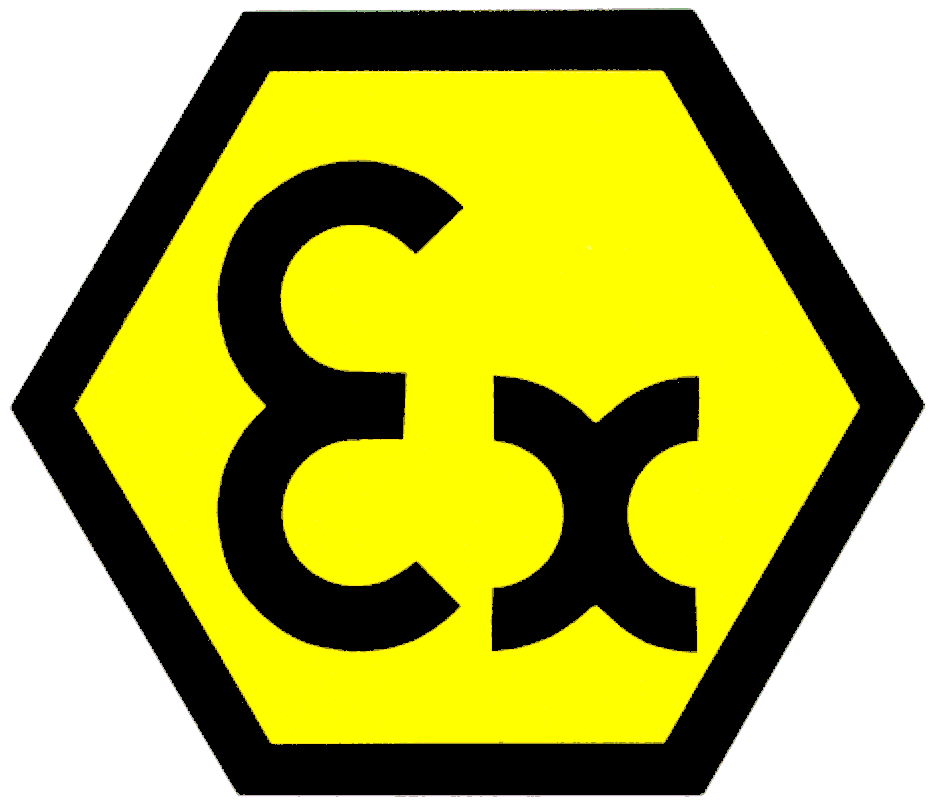There are two directives that address explosion safety awareness and prevention in the European Union. The first, known as ATEX 137, speaks to occupational safety, as it applies to Employers, Manufacturers, and Employees.
The second, ATEX 95, addresses those requirements in the EU (and outside countries that wish to export to the EU, e.g. India) for the manufacturing of safe, explosion-proof equipment, devices, and materials. These manifest as a series of directives that all must follow. Anywhere you go in the EU, you will find consistent rules regarding the treatment of explosion hazards.
For more information on equipment and certifications, we recommend reading up on our “What is ATEX” full explainer article.
Directive ATEX 137 (officially “Directive 1999/92 / EC”)
In the Netherlands, for example, ATEX 137 is anchored in the Arbo/Arbowet (Working Condition Act). This requires that employees and the employer agree on what constitutes acceptable working conditions. This agreement is then enforced by a safety officer employed for that purpose. In small companies (25 employees or less) this role can be fulfilled by a company director.
Employer Duties under ATEX 137
An employer is responsible for creating a safe working environment and the implementation of all measures to guarantee the safety and health of the employees. This includes for their own working staff, as well as invitees (legally: any person implicitly or explicitly invited onto another’s property for mutual gain, such as a depositor entering a bank or a customer entering a restaurant), or any third parties such as repair persons, or drivers that come to load or unload).
The employer is responsible for informing and giving instructions to employees, invitees, and third parties. This can be done by signage (such as: “Visitors must wear hard hats” and “Stay in designated areas”), by direct instruction, or by educational means, such as provisioning and requiring the completion of training courses.
The Explosion Safety Document
Initially, the employer maps out all known risks, such as:
- The probability of an explosive atmosphere occurring, and its persistence;
- The likelihood that ignition sources are present;
- The equipment, installation, substances, and processes used;
- The magnitude of the consequences of failures.
These are recorded in the Explosion Safety Document, along with the measures to be taken to mitigate these risks. This document is mandatory for every organization where there is a risk of explosion.
Finally, the employer must keep the information up-to-date. If new equipment is added, if machinery is changed, or upgraded, or production processes are changed, the material must be reviewed and made to conform to safety requirements.
This requires the creation of procedures that will mitigate those potentials and promote safe working practices. Employees may even be tasked to assist in the creation of the rules and methodologies, after which they are codified and everyone learns them.
The Basic Principles
Looking for more information on the basics? We wrote another (in depth) blog about it here.

- Arrange the workplace so that work can be done safely;
- Guarantee appropriate supervision; and,
- Provide appropriate training to employees.
Additionally, with particular reference to explosion hazards, this requires an employer to perform Risk Assessment to:
- Prevent the creation of explosive atmospheres; and,
- where this is not possible, avoid the possibility of ignition; and,
- thoroughly understand the equipment, substances, and processes used; and,
- in the event of ignition, mitigate the harmful effects of an explosion.
Employee Duties
Preventing explosion hazards not a one-way street, however. Employees are required to work in a safe manner to protect themselves and others from harm. This requires awareness of rules and procedures, zone regulations within buildings, as well as emergency escape routes within the areas where they regularly work.
Additional obligations include working in such a way as to prevent an explosive atmosphere from developing. This is partly achieved by employing the Clean Household strategy. This means keeping materials from accumulating to the point where they could become airborne and thus become an explosion hazard.
If there are shrouds to prevent dust-infusion into the air, static arrestors to prevent sparks, or techniques to prevent an explosive atmosphere from developing by the unnecessary resuspension of dust, these must be used or followed.
Similarly, with potentially explosive vapours, proper venting must be functional and operating during processes that generate it; non-certified equipment must never enter the area; procedures must be followed, and protective equipment must be used.
Directive ATEX 95 (officially “European Directive 94/9 / EC”)

This, of course, is the compendium of European product directives for the manufacture of explosion-proof material. The basis lies within ATEX 95, the machine directives, and the rules regarding CE marking.
The directive covers both electrical and mechanical equipment. All such equipment must be certified by an official inspection body (a ‘notified body’), such as, for example, TÜV Rheinland.
Manufacturers Duties
This group is responsible for bringing devices and equipment to market, which meets the safety requirements. In electrical equipment, for example, lighting fixtures for explosive atmospheres must be sealed so that sparking connections, exploding bulbs, or other components cannot move flame, spark, or heat outside of the fixture.
Junction boxes need not be hermetically sealed if they are intrinsically designed to have no spark generation. This junction is all direct connections with no switches or contactors, and thus noted as EX-e, for enhanced safety.
Switches designed with very low voltages are not capable of creating an energetic enough spark or sufficient heat to ignite dust or gas, and are therefore listed at EX-i, for intrinsically safe.
Mechanical devices must also be incapable of generating heat or sparks during failure (overworked bearings or gross mechanical failure) in order to meet certification.
Zones & Categories
Understanding zoning is very important. Most everything in daily life is Zone 2 or Zone 22, where there is little chance of (respectively) a vapour or dust-based explosive atmosphere evolving. In this environment electrical equipment can be category 3, which is safe in normal, everyday operation.
| Gas | Dust | Description |
|---|---|---|
| Zone 0
|
Zone 20
|
Explosive atmosphere continuously present |
| Zone 1
|
Zone 21
|
Explosive atmosphere occasionally present |
| Zone 2
|
Zone 22
|
Explosive atmosphere unlikely to occur under normal conditions |
Zone 1 and Zone 21 are places where such an explosive atmosphere could exist on an occasional basis. It is predictably created during specified operations. In this instance, Category 2 is called for, which is safe in normal circumstances, and safe in instances where potential faults are known, understood, and taken into account.
Zone 0 and Zone 20 are places where explosive atmospheres virtually always exist. Grain & powdered sugar product processing, petroleum product cracking, suspended sawdust in lumber mills, methane gas in landfills or sewage treatment plants, or spray painting operations, are all excellent examples. These will require Category 1 equipment, which is safe and reliable in circumstances where even two simultaneous faults occur, independently of each other.
The Takeaway
ATEX 137 & ATEX 95—The Relationship
Employee, employer, and manufacturer responsibilities (ATEX 137) are intimately related to the sort of equipment used (ATEX 95) in a zone of known risk. Normally safe Category 3 equipment is not safe in Zones 1/21 or Zones 0/20. Similarly, Category 2 equipment is not safe in Zones 0/20.
You can certainly use Category 1 equipment in any Zone, but economics dictates that you use less expensive equipment where such high levels of safety are not required.
Ultimately, ATEX 137 & ATEX 95 regulations are designed to protect you, whether you’re the employer, employee, visitor, third party. Take advantage of the work already done to diminish your risk.